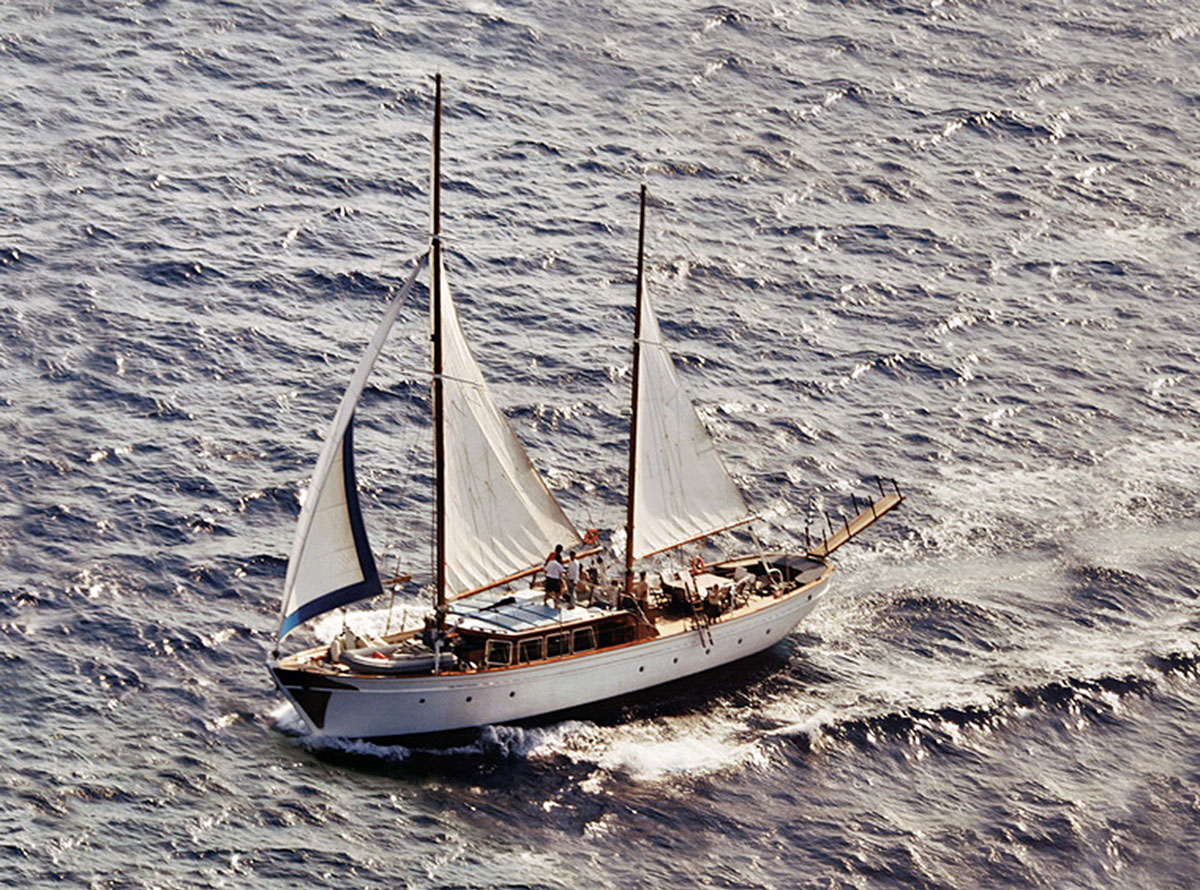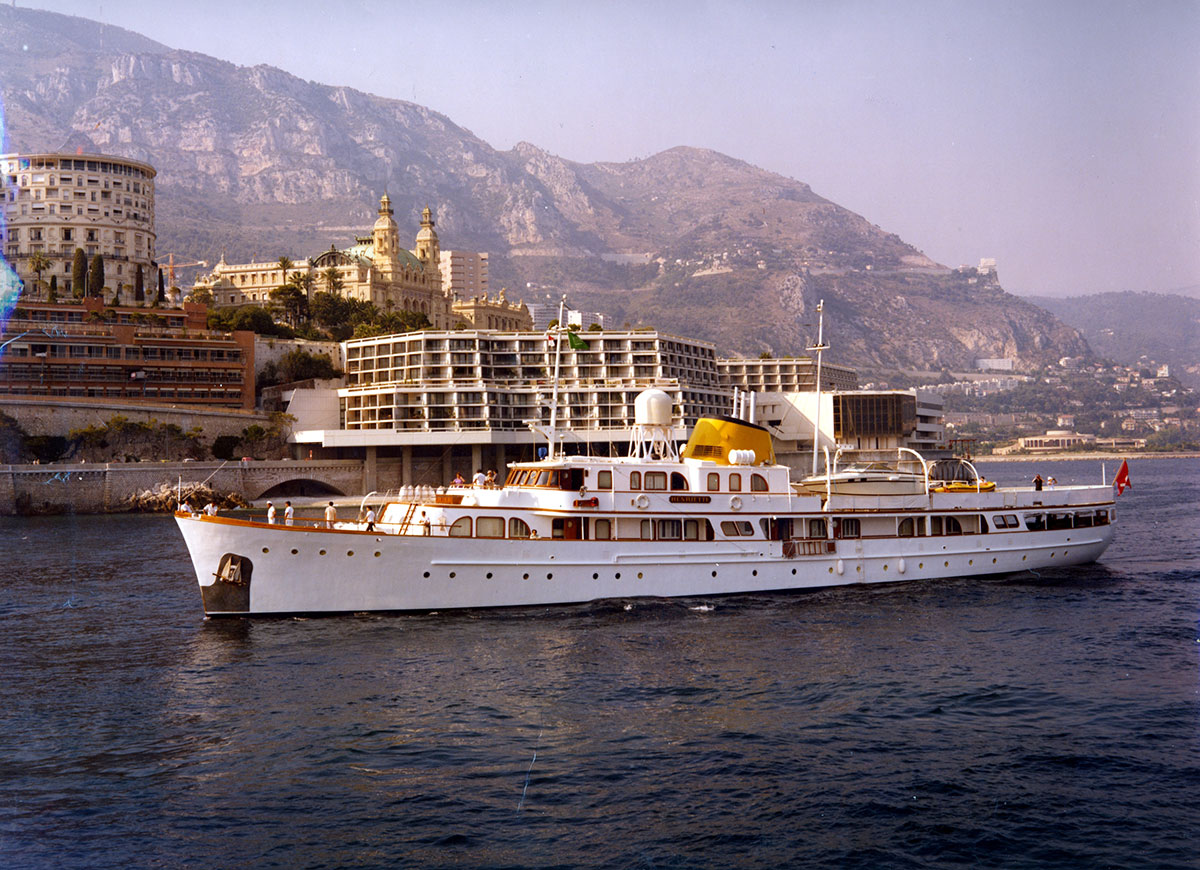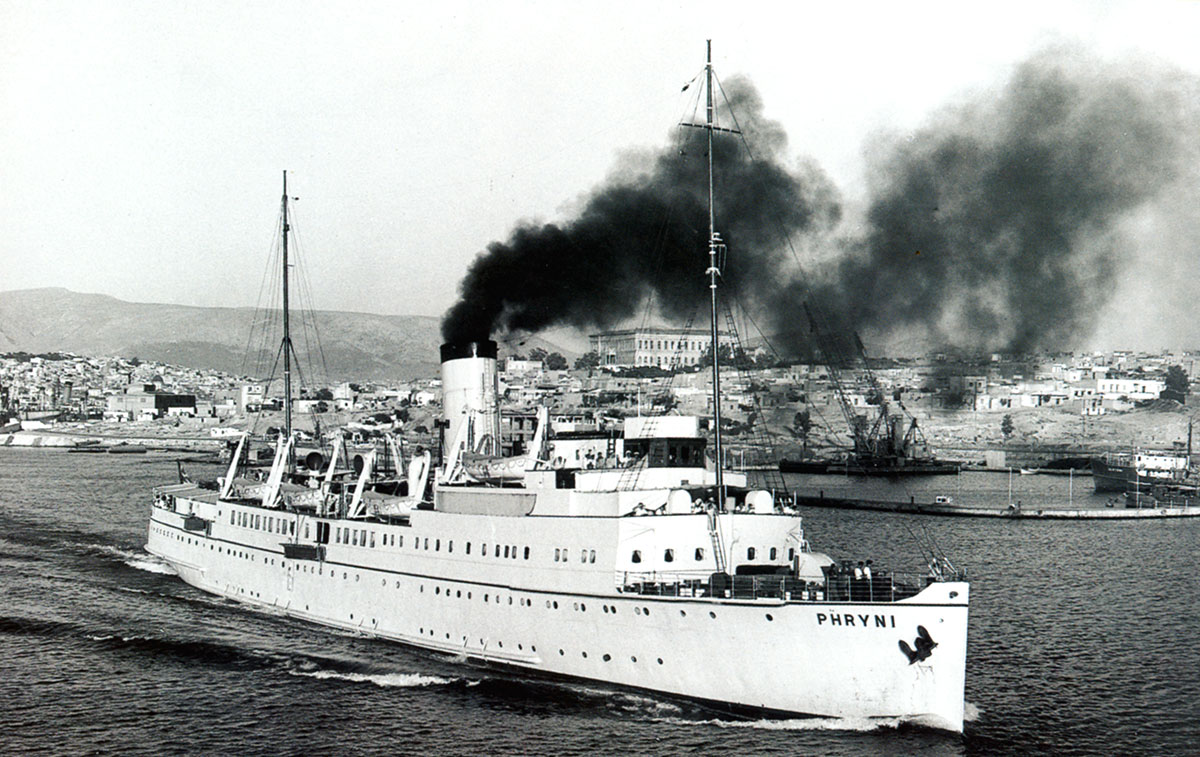PrivatSea History: Vintage Boats
Vintage Boats that formed the PrivatSea Fleet

Alcyonides: Inviting Prospect
Offering a private charter yacht to cruise the Greek Islands in 1963 was an innovative and unique kind of luxury vacation that sowed the seeds of PrivatSea.
The origins of PrivatSea’s yacht chartering services are charming and modest. On 6 February 1963, John Latsis’ newly established Yacht Charter Company sent out a series of personal letters to potential clients in Athens and beyond. The letters were promoting a new and unique kind of luxury vacation; the private charter. The idea was simple. Guests would commandeer a private yacht, complete with crew, and create an itinerary of their own.
He began with a modest fleet of five “Alcyonides” yachts, foundational vintage boats from PrivatSea’s past, each built using traditional methods at the Perama shipyard, Athens. Each had accommodation for six passengers, with a crew of six. The 1960s was a time of huge growth in global tourism and Greece was becoming a major destination. The Aegean Sea and the Greek Islands were still relatively unknown destinations, especially for high-end travellers.
The Yacht Charter Company flourished as Greece attracted international attention. Aquamarine seas, iconic beaches and a healthy respect for the “simple life” made Greece irresistible. After managing the Alcyonides fleet for over a decade, John Latsis eventually acquired his first yacht in 1977, the Henriette. This was the start of the company that was to become PrivatSea, now renowned for its involvement in the Mediterranean’s mega-yacht business and still an expert on all things Greek.

Henriette: First Lady
When John Latsis bought the 58m yacht Henriette in 1977 and started entertaining high-profile guests on board, he unknowingly laid the foundation for the establishment of the PrivatSea bloodline with this vintage boat, stylish and technologically advanced for her time. Although worlds apart from today’s sleek mega yachts, at her launch in 1950 Henriette represented the pinnacle of American shipbuilding, benefiting from technologies invented during the Second World War.
Designed by the New York-based naval architect and marine consultant John Wells (1879-1962) and built by Welding Shipyards in Norfolk, Virginia, she was enjoyed by the Latsis family and was popular with guests in the Italian and French Rivieras. Her acquisition signalled the involvement of the Latsis Group in the yacht management business. In 2006, she underwent a major refit, including a new contemporary interior, and was renamed Chrysalis. Following the refit, she was sold in 2009.

Phryne: Life in the Fast Lane
One of the most impressive passenger vessels on the Greek seas back in the 1950s and amongst PrivatSea’s vintage boats, Phryne started life in 1928 at the William Denny and Brothers shipyard in Scotland. She was a Channel ferry boat on the Newhaven-Dieppe route for more than a decade, before becoming part of the British Expeditionary Force during the Second World War, carrying British troops to and from the Northern coast of France until the end of the war.
John Latsis purchased Phryne in 1955 and she once again became a passenger ferry — and a rather fast one at that, reaching speeds of 22 knots. She took passengers to the Cyclades and the islands of the Eastern Aegean Sea, as well as on the Piraeus-Crete route. A few years later, she was used to carry pilgrims to the holy city of Mecca on a route taking in Tripoli, Libya, Jeddah and Saudi Arabia.
Sadly, Phryne ended her days in the scrapyard in 1964.


 Go back
Go back